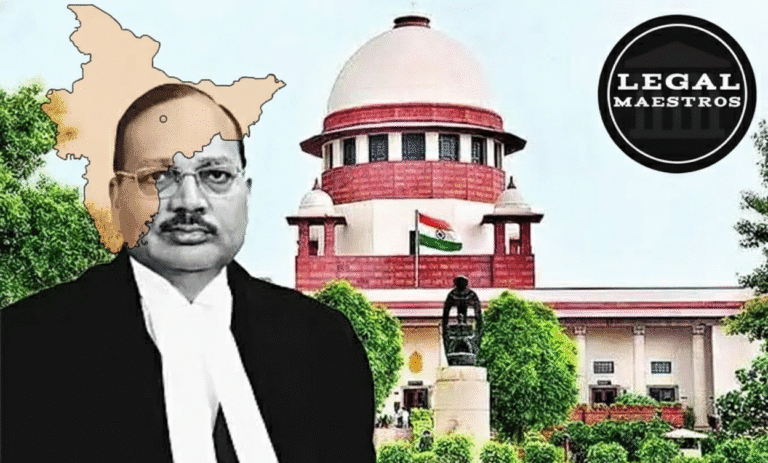
Recently, the Supreme Court of India answered a crucial question of whether an entry made in the balance sheet of a company can be classed as a de-facto acknowledgment of debt as stipulated in Section 18 of the Limitation Act, 1963, thus giving a further extension concerning the timeline of application as assigned under Section 7 of the Insolvency and Bankruptcy Code (IBC) 2016. The example of IL & FS Financial Services Limited versus. Adhunik Meghalaya Steels Private Limited (2025 INSC 911) contains a representative approach to the legal principles of this case and elucidates the use of their own directions on the Supreme Court regarding the extension of limitation of period due to pandemic of COVID-19.
Facts of the Case
The present argument emerged due to a loan contract on February 27, 2015 between IL & FS Financial Services Limited (the appellant) and Adhunik Meghalaya Steels Private Limited (the respondent) of 30 crores on a term loan. On March 1, 2018, the account of the respondent became a Non-Performing Asset (NPA) since the respondent could not service its debt. On January 15, 2024, under the IBC, the appellant then filed a Section 7 application that aimed to implement corporate insolvency resolution proceedings against the respondent. It was a default liquidity application of an excess of Rs. 55 Crores and the date of default was mentioned as March 1, 2018.
Both Tribunals, the National Company Law Tribunal (NCLT) and the National Company Law Appellate Tribunal (NCLAT) rejected the application, on the ground that it was time-barred. The tribunals argued that the financial year 2019-20 balance sheet which the appellant was using as an acknowledgment of debt did not specifically use the name of the appellant as a creditor. In the case of the presumed, they arrived at a conclusion that the application must have been filed on or before May 30, 2022, after taking into consideration the extensions in the COVID-19 pandemic by the Supreme Court. Since he felt aggrieved by this ruling, the appellant sought remedy in the Supreme Court.
For any queries or to publish an article or post or advertisement on our platform, do call at +91 6377460764 or email us at contact@legalmaestros.com.
The Fundamental Legal Debates and Matters
The verdict of the Supreme Court was based on two questions. First, was the acknowledgment of the debt in the balance sheet of the respondents in the financial year 2019- 20 a valid acknowledgment of debt under Section 18 of the Limitation Act? Second, were it to do so, whose (and how many) of the orders of the Supreme Court in the COVID-19-related extensions of limitation would govern the case?
The Court commenced by reiterating that the Limitation Act, 1963 is applicable to the proceedings contemplated in IBC which in this case is the Section 238A of the Code. It again stated that the limitation period of such applications is three years since the right to apply accrues as stipulated in Article 137 of the Limitation Act. The case put forth by the appellant as to the application being time-barred was based on the argument that the signing of the balance sheet by the financial year 2019-20 had been taken into consideration which was a fresh acknowledgment of the debt argument and which commenced a new three-year limitation period.
Interpretation of Acknowledgment of Debt
The Court took the requirements of a valid acknowledgment as per Section 18 of the Limitation Act as something to be carefully checked. It cited a number of landmark cases namely: Khan Bahadur Shapoor Fredoom Mazda v. Durga Prasad Chamaria and Others, a case decided that an acknowledgment has to be about existing liability and that there has to be a relationship of jural nature between the parties i.e. it should be between a debtor and a creditor. The plan or purpose to acknowledge this relationship can be deduced on the aspect of the admission and may not be necessary in verbal terms. Most importantly, the Court gave great significance to the fact that in the interpretation of such an acknowledgment, circumstances and the general tenor of the document may be resorted to and a liberality must be a guide to interpretation.
For any queries or to publish an article or post or advertisement on our platform, do call at +91 6377460764 or email us at contact@legalmaestros.com.
To these principles, the Court applied them to the facts and saw that the facts were not just the 2019-20 balance sheet taken in isolation. It took into account that the financial statements of the prior periods (2015-16, 2016-17 and 2017-18) clearly stated the working of the advance namely the borrowings by the IL & FS Financial Services Ltd. and were also secured with a pledge of shares. The Court noted that the 2019-20 balance sheet although not identifying the creditor contained in the sheet what it termed as a secured borrowing amount which once matched with the cash flow statement had a direct correlation to the figures of the prior year amounts. The cash flow statement also stated that no repayment was made on the borrowings and this further led to the conclusion that the debt was not repaid. The verdict of the Court was that the 2019-20 balance sheet, considered in the light of the former financial statements and the attendant cash flow statement, was a clear recognition of an existing obligation and the jural relationship between parties.
The exclusion of Limitation Period because of COVID-19
As it was proved that the valid acknowledgment was established on August 12, 2020, the issue of limitation extensions came to be resolved by the Court. The date when the balance sheet was signed August 12, 2020, was within the ordinary range of three-year limitation period that started March 1, 2018. This recognition put a halt to the limitation time to August 11, 2023.
Nonetheless, this had not been the case as the Court had issued a series of orders on the extension of the period of limitation, owing to the COVID-19 pandemic. The pertinent question was how to use Para 5 (I) or Para 5 (III) of the order that was on January 10, 2022. Para 5(III) was used by NCLT and NCLAT that gave a 90-day limitation period ending March 1, 2022 proportionally to cases whose limitation expired during pandemic days. This, however, was considered by the Supreme Court to be a wrong application.
For any queries or to publish an article or post or advertisement on our platform, do call at +91 6377460764 or email us at contact@legalmaestros.com.
The Court found, as the limitation period was run full time since the date of the acknowledgment (on August 12, 2020), the limitation period should have expired on file date (August 11, 2023). This case was thus covered by Para 5(I) of the order that stated all the time up to the present day (March 15, 2020 to February 28, 2022) must be excluded in computation of limitation. In that way, the appellant omitted this period, and the date and date of the end of the application of the limitation effectively began on March 1, 2022, and expired on February 27, 2025. It was way within this long time as the application was filed on January 15, 2024.
This judgment of the Supreme Court has indeed given reasonable and clear method to the most important question of debt recognition in form of balance sheet entries. It insists on a situational and liberal meaning of such entries considering peripheral conditions and document materials. The decision also explains the use of its own COVID-19 expansion of limitation orders making sure that the merit of the exclusion of the pandemic period is properly applied. By condoning the judgment of the National Company Law Appellate Tribunal and National Company Law Tribunal, the Court remanded the case to afresh which to be treated as the Section 7 application was filed within time prescribed under the statute of limited liability. The decision is a significant precedent to be used by financial creditors that tried to receive repayments of their debt under IBC especially in cases where the debt has been acknowledged in the financial records of the corporate debtor.




![Research Assistantship @ Sahibnoor Singh Sindhu, [Remote; Stipend of Rs. 7.5k; Dec 2025 & Jan 2026]: Apply by Nov 14, 2025!](https://legalmaestros.com/wp-content/uploads/2025/11/Gemini_Generated_Image_s0k4u6s0k4u6s0k4-768x707.png)
![Karanjawala & Co Hiring Freshers for Legal Counsel [Immediate Joining; Full Time Position in Delhi]: Apply Now!](https://legalmaestros.com/wp-content/uploads/2025/11/Gemini_Generated_Image_52f8mg52f8mg52f8-768x711.png)
![Part-Time Legal Associate / Legal Intern @ Juris at Work [Remote]: Apply Now!](https://legalmaestros.com/wp-content/uploads/2025/11/ChatGPT-Image-Nov-12-2025-08_08_41-PM-768x768.png)
![JOB POST: Legal Content Manager at Lawctopus [3-7 Years PQE; Salary Upto Rs. 70k; Remote]: Rolling Applications!](https://legalmaestros.com/wp-content/uploads/2025/11/ChatGPT-Image-Nov-12-2025-08_01_56-PM-768x768.png)